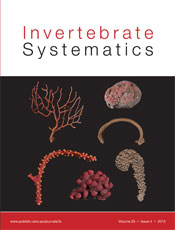IS14021A multigene phylogenetic analysis results in a redefinition of the genus Notonomus Chaudoir (Coleoptera, Carabidae) and descriptions of new species of the subgenus Leiradira Castelnau
This is the first-ever molecular analysis and first taxonomic treatment in 50 years of one of Australia’s most species-rich groups of carabid beetles. The phylogeny-based reclassification provides an understanding of the evolutionary relationships and the taxonomic treatment improves our knowledge of the true diversity of the group. As they are frequently a dominant part of the ecosystem, study of these beetles helps us preserve, protect and understand Australia’s invertebrate biodiversity.




